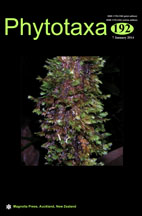Abstract
Current cyanobacterial taxonomic studies are mainly performed through polyphasic characterization at the genus and/or species levels. In this study, eleven Pseudanabaena strains isolated in China were taxonomically and phylogenetically evaluated by investigating several characteristics, including morphological features, cellular ultrastructures, pigment composition, and 16S rRNA gene sequences. The strains were identified as four morphospecies, namely, Pseudanabaena mucicola, P. galeata, P. limnetica, and P. minima. The cellular ultrastructures of these species showed that peripheral thylakoids with 4‒8 parallel layers were parietally distributed. Phylogenetic results based on 16S rRNA gene sequences indicated that most of the Pseudanabaena strains used in this study, including the eleven from China and three Pseudanabaena catenata strains from GenBank, gathered into one large cluster that represents the core of the genus Pseudanabaena. Several Pseudanabaena species/strains that represent different extreme environments were phylogenetically located outside the main stream cluster and should be removed under the genus Pseudanabaena on the basis of the role of the main stream species. Limnothrix strains were divided into two clades, and the taxonomic solution for these clades was discussed. This study is the first to report on the morphology and phylogeny of Pseudanabaena species in China, providing new insights into the taxonomy of the genera Pseudanabaena and Limnothrix.

